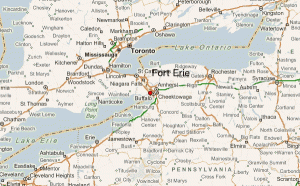
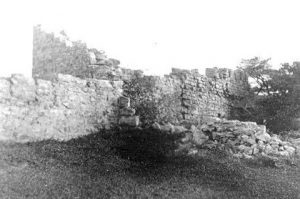 Part of the War of 1812 involved a border dispute between the United States and British North America, which is present-day Canada. During the war, the Americans launched several invasions into Upper Canada, at the point of present-day Ontario. One section of the border where this was easiest, because of communications and locally available supplies, was along the Niagara River. Fort Erie was the British post at the head of the river, near its source in Lake Erie. In 1812, two American attempts to capture Fort Erie were bungled by Brigadier General Alexander Smyth. Bad weather or poor administration halted the American efforts to cross the river, and Fort Erie remained in British hands.
Part of the War of 1812 involved a border dispute between the United States and British North America, which is present-day Canada. During the war, the Americans launched several invasions into Upper Canada, at the point of present-day Ontario. One section of the border where this was easiest, because of communications and locally available supplies, was along the Niagara River. Fort Erie was the British post at the head of the river, near its source in Lake Erie. In 1812, two American attempts to capture Fort Erie were bungled by Brigadier General Alexander Smyth. Bad weather or poor administration halted the American efforts to cross the river, and Fort Erie remained in British hands.
In 1813, the Americans won the Battle of Fort George at the northern end of the Niagara River. At this point, the British abandoned the Niagara frontier and allowed Fort Erie to fall into American hands without a fight. Unfortunately, the Americans failed to follow up their victory, and later in the year they withdrew most of their soldiers from the Niagara to furnish an ill-fated attack on Montreal. This allowed the British to recover their prior positions and to mount raids which led to the Capture of Fort Niagara and the devastation of large parts of the American side of the Niagara River.
For 1814, a new invasion of Upper Canada was planned under the command of Major General Jacob Brown. Originally aimed at Kingston on Lake Ontario, it was switched to the Niagara because British ships controlled Lake Ontario for the first six months of 1814. The United States finally captured Fort Erie in 1814. It was thought that the British, while outnumbered, surrendered Fort Erie prematurely…at least in the view of the British commanders. They fully expected the outnumbered British troops to stand and fight…to the death, if need be. Because American troops were already concentrated at Buffalo and Black Rock, the attack was to be launched across the southern part of the Niagara frontier. Fort Erie was the first objective that stood in the way, and so, its capture was required. Lieutenant General Gordon Drummond, the British commander in Upper Canada, hoped that the garrison at Fort Erie could at least buy him enough time against the American invasion to concentrate his forces. Major Thomas Buck was given command of the fort with a garrison of 137 British soldiers.
Brown’s force crossed into Canada on July 3, 1814. Brigadier General Winfield Scott landed a mile and a half north of the fort with a brigade of regulars while it was still dark. Another brigade under Eleazar Wheelock Ripley crossed the head of the river to the south of the fort, a little behind schedule due to fog. Meanwhile, New York militia demonstrated opposite Chippewa to distract the British troops in the area. As Scott’s and Ripley’s forces approached Fort Erie, Buck fired only a few shots at the Americans from the fort’s cannon and then surrendered. The Americans had captured an important fort at little cost. The fort’s garrison had bought the British very little time and Buck was later court martialed for his hasty surrender.
From their new base at Fort Erie, Brown next marched up the Niagara River and met the British at the Battle of Chippewa. The British commander at Chippewa, Major General Phineas Riall, believed that the garrison of Fort Erie was still holding out, which contributed to his decision to launch a hasty and ill-fated attack. Following the Battle of Lundy’s Lane in July, British forces under the command of Gordon Drummond advanced and unsuccessfully attempted to besiege the fort. After that it remained in American hands until the American commanders decided to abandon the fort, which was evacuated and blown up in November 1814. These days, with so many historic forts across the nation, it was shocking to me to read that they had blown up the fort, 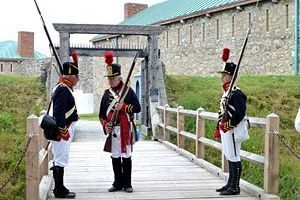
 but I guess they weren’t interested in the historic side of things…they were making history. The fort, which had been built by the British in 1764, was restored, and was incorporated as a village in 1857. It became a town when it merged with Bridgeburg in 1932. Fort Erie is now the site of a large horse-racing track and has steel, aircraft, automotive, paint, and pharmaceutical industries. It is a town with a population of 29,960 in 2011.
but I guess they weren’t interested in the historic side of things…they were making history. The fort, which had been built by the British in 1764, was restored, and was incorporated as a village in 1857. It became a town when it merged with Bridgeburg in 1932. Fort Erie is now the site of a large horse-racing track and has steel, aircraft, automotive, paint, and pharmaceutical industries. It is a town with a population of 29,960 in 2011.

 With each passing year, we imagine what Laila might have been like. Seven years ago today, my niece, Jenny Spethman and her husband, Steve welcomed their first daughter into the world. The birth was one of happiness and concern. Their daughter was not well. Her heart was not properly formed…a condition called Hypoplastic Left Heart Syndrome, had left her left ventricle underdeveloped. Little Laila would go to Heaven just 18 days later, and just like that, her little life on earth would be over…but not her memory. No, her memory will live forever in the hearts and minds of her parents, grandparents, siblings, and the rest of her family. It’s amazing to me that a child I never got to meet could continue to impress my mind, and the minds of the entire family, with pictures of who she might have become.
With each passing year, we imagine what Laila might have been like. Seven years ago today, my niece, Jenny Spethman and her husband, Steve welcomed their first daughter into the world. The birth was one of happiness and concern. Their daughter was not well. Her heart was not properly formed…a condition called Hypoplastic Left Heart Syndrome, had left her left ventricle underdeveloped. Little Laila would go to Heaven just 18 days later, and just like that, her little life on earth would be over…but not her memory. No, her memory will live forever in the hearts and minds of her parents, grandparents, siblings, and the rest of her family. It’s amazing to me that a child I never got to meet could continue to impress my mind, and the minds of the entire family, with pictures of who she might have become.
At 7 years of age, I can picture the little first grader she would be now. In my minds eye, I can picture her little face with the changes that seven years would bring. I can imagine her laughter, very much like her little sister, Aleesia’s, and a personality to match. I think that when a child is lost, the family tends to look at other children who are the same age that lost child would be, and it is so easy to place the lost child in the same activities, looks, and personalities. Of course, it’s not exact, how could it be, but it’s enough to truly imagine what the lost child would be like at each age. That’s how it is with Laila. It’s how we can imagine the little girl she would be.


Laila left us far too soon, but her memory will live in our hearts forever. From her, we learned not to take life for granted. We learned to take the pictures of even the littlest, most insignificant event, because it may end up being very important. We have learned to spend time with those we love, and to tell each other how much we love each other. We will see Laila again in Heaven, but for now, we all miss her very much. Today would have been Laila’s 7th birthday. Happy birthday in Heaven Princess Laila. We love you.
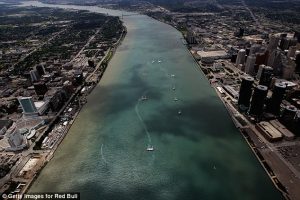 When a body of water stands between two places that people need to go, there are a few options to solve the dilemma…a bridge, a road around, or as was the case of a way across the Detroit River, a tunnel. With a river, you can’t really go around, so often it’s a bridge, but in this case there was a great deal of opposition to a bridge over the river. Since the beginning of the 19th century, Detroiters and Windsorians had been trying to find a way to move people and goods back and forth across the Detroit River. For decades, railroad interests proposed tunnels and bridges galore, but powerful advocates of marine shipping always managed to block those projects, because they did not want to lose business to faster and more capacious trains. Plans for bridges were particularly troubling to those shippers, since just one low-hanging bridge had the potential to keep high-masted sailing vessels off the river altogether.
When a body of water stands between two places that people need to go, there are a few options to solve the dilemma…a bridge, a road around, or as was the case of a way across the Detroit River, a tunnel. With a river, you can’t really go around, so often it’s a bridge, but in this case there was a great deal of opposition to a bridge over the river. Since the beginning of the 19th century, Detroiters and Windsorians had been trying to find a way to move people and goods back and forth across the Detroit River. For decades, railroad interests proposed tunnels and bridges galore, but powerful advocates of marine shipping always managed to block those projects, because they did not want to lose business to faster and more capacious trains. Plans for bridges were particularly troubling to those shippers, since just one low-hanging bridge had the potential to keep high-masted sailing vessels off the river altogether.
In 1871, the region’s railroads finally won permission to build a trans-national tunnel, and workers began to dig into the river at the foot of Detroit’s San Antoine Street. They were forced to abandon the project just 135 feet  under the river, however, when they struck a pocket of sulfurous gas that made workers so ill that none could be persuaded to return. Likewise, in 1879, another tunnel had to be abandoned when it ran right into some unexpectedly difficult to excavate limestone under the river. The first successful Michigan to Canada tunnel project finally opened in 1891. It was the 6,000 foot long Grand Trunk Railway Tunnel at Port Huron.
under the river, however, when they struck a pocket of sulfurous gas that made workers so ill that none could be persuaded to return. Likewise, in 1879, another tunnel had to be abandoned when it ran right into some unexpectedly difficult to excavate limestone under the river. The first successful Michigan to Canada tunnel project finally opened in 1891. It was the 6,000 foot long Grand Trunk Railway Tunnel at Port Huron.
Soon enough, it was clear to most people on both sides of the border that they needed to build some sort of structure for transporting automobiles across the river too. In June 1919, the mayors of Detroit and Windsor decided to build a city to city tunnel that would serve as a memorial to the American and Canadian soldiers who had died in World War I. Even after advocates of the under-construction Ambassador Bridge tried to frighten away the tunnel’s backers by spreading rumors about the danger of subterranean carbon monoxide poisoning, the tunnel boosters were undeterred. One said, they were “inspired by God to have this tunnel built.” Construction began in 1928. First, barges were used to dredge a 2,454 foot long trench across the river. Then workers sank nine 8,000 ton steel and concrete tubes into the trench and welded them together. Finally, an  elaborate ventilation system was built to make sure that the air in the tunnel safe to breathe.
elaborate ventilation system was built to make sure that the air in the tunnel safe to breathe.
On Nov 1, 1930, President Herbert Hoover turned a telegraphic Golden Key in the White House to mark the opening of the 5,160 foot long Detroit-Windsor Tunnel between the United States city of Detroit, Michigan, and the Canadian city of Windsor, Ontario. The tunnel opened to regular traffic on November 3, 1930. The first passenger car it carried was a 1929 Studebaker. In the first nine weeks it was open, nearly 200,000 cars passed through the Detroit-Windsor Tunnel. Today, about 9 million vehicles use the tunnel each year.
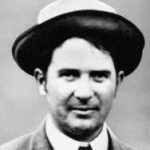
 My niece, Siara Harman is one of many girls who were cheerleaders in high school and college. She even won a State Championship and a Grand National Championship with the Kelly Walsh Cheer Squad in 2011. Since it’s beginnings, cheerleading has come a long way. In fact, I doubt if today’s cheerleaders would recognize their earlier counterparts, if they saw them back then. Siara was a skilled cheerleader, and very athletic, and we are all proud of her cheerleading years.
My niece, Siara Harman is one of many girls who were cheerleaders in high school and college. She even won a State Championship and a Grand National Championship with the Kelly Walsh Cheer Squad in 2011. Since it’s beginnings, cheerleading has come a long way. In fact, I doubt if today’s cheerleaders would recognize their earlier counterparts, if they saw them back then. Siara was a skilled cheerleader, and very athletic, and we are all proud of her cheerleading years.
The roots of American cheerleading are closely tied to American football’s roots. The first intercollegiate football game was played on November 6, 1869, between Princeton University and Rutgers University in New Jersey. By the 1880s, Princeton had formed an pep club. Organized cheering started as an all-male activity, as many sports do. As early as 1877, Princeton University had a Princeton Cheer. Basically, it was a fight song that was documented in the February 22, 1877; March 12, 1880; and November 4, 1881, issues of The Daily Princetonian. This cheer was yelled from the stands by students attending games, as well as by the athletes themselves. The cheer, “Hurrah! Hurrah! Hurrah! Tiger! S-s-s-t! Boom! A-h-h-h!” remains in use with slight modifications today, where it is now referred to as the Locomotive. Princeton class of 1882 graduate Thomas Peebles moved to Minnesota in 1884. He took with him the idea of organized crowds cheering at football games to the University of Minnesota. The term “Cheer Leader” had been used as early as 1897, with Princeton’s football officials having named three students as Cheer Leaders: Thomas, Easton, and Guerin from Princeton’s classes of 1897, 1898, and 1899, respectively, on October 26, 1897. These students would cheer for the team also at football practices, and special cheering sections were designated in the stands for the games themselves for both the home and visiting teams. On November 2, 1898, the University of Minnesota was on a losing streak. A medical student named Johnny Campbell assembled a group to energize the team and the crowd. Johnny picked up a megaphone and rallied the team to victory with the first organized cheer: “Rah, Rah, Rah! Ski-U-Mah! Hoo-Rah! Hoo-Rah! Varsity! Varsity! Minn-e-so-tah!” With that action, Campbell became the first cheerleader in America. Soon after, the University of Minnesota organized a “yell leader” squad of six male students, who still use Campbell’s original cheer today. In 1903, the first cheerleading fraternity, Gamma Sigma, was founded.
In 1923, at the University of Minnesota, women were finally permitted to participate in cheerleading. However, it took time for other schools to follow. In the late 1920s, many school manuals and newspapers that were published still referred to cheerleaders as chap, fellow, and man. Women cheerleaders were overlooked until the 1940s, when collegiate men were drafted for World War II, creating the opportunity for more women to make their way onto sporting event sidelines. As noted by Kieran Scott in Ultimate Cheerleading: “Girls really took over for the first time.” A report written on behalf of cheerleading in 1955 explained that in larger schools, “occasionally boys, as well as, girls are included,” and in smaller schools, “boys can usually find their place in the athletic program, and cheerleading is likely to remain solely a feminine occupation.” During the 1950s, cheerleading in America also increased in popularity. By the 1960s, some began to consider cheerleading too feminine an extracurricular activity for boys, and by the 1970s, girls primarily cheered at public school games. However, this did not stop its growth. Cheerleading could be found at almost every school level across 
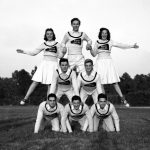 the country, even youth leagues. In 1975, it was estimated by a man named Randy Neil that over 500,000 students actively participated in American cheerleading from grade school to the collegiate level. He also approximated that 95% of cheerleaders within America were female. Since 1973, cheerleaders have started to attend female basketball and other all-female sports as well. As of 2005, overall statistics show around 97% of all modern cheerleading participants are female, although at the collegiate level, cheerleading is co-ed with about 50% of participants being male.
the country, even youth leagues. In 1975, it was estimated by a man named Randy Neil that over 500,000 students actively participated in American cheerleading from grade school to the collegiate level. He also approximated that 95% of cheerleaders within America were female. Since 1973, cheerleaders have started to attend female basketball and other all-female sports as well. As of 2005, overall statistics show around 97% of all modern cheerleading participants are female, although at the collegiate level, cheerleading is co-ed with about 50% of participants being male.
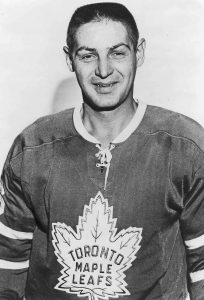
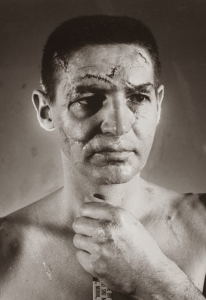 If you could see all of Terry Sawchuk’s wounds at once, his face would look like this one that was reproduced with makeup. In reality, Terry’s wounds have healed over the years, and the scars are not nearly as visible as the makeup reproduction portrays. Nevertheless, Sawchuk’s 16 years of playing goalie for the Toronto Maple Leafs hockey team in the years before the goalies wore safety equipment left their marks and took their toll on his body. Re-created here, by a professional make-up artist and a doctor, are some of the more than 400 stitches he had earned during 16 years in the National Hockey League. Terry Sawchuk’s face was bashed over and over, but not all at one time. The re-creation of his injuries was done to help show the extent of his injuries over a span of years. Sawchuk had sustained other injuries that were not shown here too…a slashed eyeball requiring three stitches, a 70% loss of function in his right arm because 60 bone chips were removed from his elbow, and a permanent “sway-back” that was caused by a continual bent-over posture during the games.
If you could see all of Terry Sawchuk’s wounds at once, his face would look like this one that was reproduced with makeup. In reality, Terry’s wounds have healed over the years, and the scars are not nearly as visible as the makeup reproduction portrays. Nevertheless, Sawchuk’s 16 years of playing goalie for the Toronto Maple Leafs hockey team in the years before the goalies wore safety equipment left their marks and took their toll on his body. Re-created here, by a professional make-up artist and a doctor, are some of the more than 400 stitches he had earned during 16 years in the National Hockey League. Terry Sawchuk’s face was bashed over and over, but not all at one time. The re-creation of his injuries was done to help show the extent of his injuries over a span of years. Sawchuk had sustained other injuries that were not shown here too…a slashed eyeball requiring three stitches, a 70% loss of function in his right arm because 60 bone chips were removed from his elbow, and a permanent “sway-back” that was caused by a continual bent-over posture during the games.
Many people were hurt playing sports in the years before safety equipment was used. For some of them, like Sawchuk, the equipment would not come in time to spare them from years of pain, and even disabilities. It was  a sad reality of many sports that everyone loves. The first goalie’s mask was a metal fencing mask donned in February 1927 by Queen’s University netminder Elizabeth Graham, mainly to protect her teeth. In 1930, the first crude leather model of the mask, which was actually an American football “nose-guard” was worn by Clint Benedict to protect his broken nose. After recovering from the injury, he abandoned the mask, never wearing one again in his career. At the 1936 Winter Olympics, Teiji Honma wore a crude mask, similar to the one worn by baseball catchers. The mask was made of leather, and had a wire cage which protected the face, as well as Honma’s large circular glasses.
a sad reality of many sports that everyone loves. The first goalie’s mask was a metal fencing mask donned in February 1927 by Queen’s University netminder Elizabeth Graham, mainly to protect her teeth. In 1930, the first crude leather model of the mask, which was actually an American football “nose-guard” was worn by Clint Benedict to protect his broken nose. After recovering from the injury, he abandoned the mask, never wearing one again in his career. At the 1936 Winter Olympics, Teiji Honma wore a crude mask, similar to the one worn by baseball catchers. The mask was made of leather, and had a wire cage which protected the face, as well as Honma’s large circular glasses.
Finally, in 1959 goalies began wearing masks full-time. On November 1, 1959, in a game between the Montreal Canadiens and New York Rangers of the National Hockey League, Canadiens goaltender Jacques Plante was struck in the face by a shot from Andy Bathgate. He had previously worn a face mask in practice, but coach Toe Blake refused to allow him to wear it in a game. He thought it might inhibit his vision. After being stitched up, Plante gave Blake an ultimatum. He refused to go back out onto the ice without the mask. Blake agreed, not wanting to forfeit the game, because NHL teams did not have back-up goalies at the time. Plante went on a long unbeaten streak wearing the mask. That ended when he was asked to remove it for a game. After that particular loss, Plante resumed donning the mask for the remainder of his career. Plante was ridiculed when he introduced the mask into the game. People questioned his dedication and bravery. In response, Plante made an analogy to a person skydiving without a parachute. Although Plante faced some 
 teasing, the face-hugging fiberglass goalie’s mask soon became the standard. Since the invention of the fiberglass hockey mask, professional goalies no longer play without a mask. The last goalie to play without a mask was Andy Brown, who played his last NHL game in 1974. He would then go to the Indianapolis Racers of the WHA and play without a mask till his retirement in 1977. So much has been learned about playing without protective gear since those days, but for the people who played before all that information, it came at a heavy price.
teasing, the face-hugging fiberglass goalie’s mask soon became the standard. Since the invention of the fiberglass hockey mask, professional goalies no longer play without a mask. The last goalie to play without a mask was Andy Brown, who played his last NHL game in 1974. He would then go to the Indianapolis Racers of the WHA and play without a mask till his retirement in 1977. So much has been learned about playing without protective gear since those days, but for the people who played before all that information, it came at a heavy price.
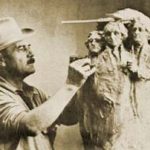
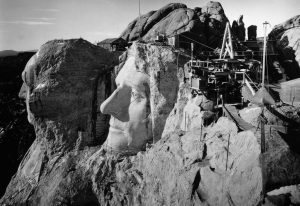 When a construction project begins, it usually takes a matter of a few months to complete. That is not how it works when carving a large sculpture, such as Mount Rushmore. Mount Rushmore National Memorial is a sculpture carved into the granite face of Mount Rushmore, a batholith in the Black Hills in Keystone, South Dakota, United States. It was the vision of Doane Robinson, who thought that carving the faces of famous people in the Granite of the Black Hills region, would bring tourists to the region. Robinson’s vision has proven to be an amazing success. His original idea was to put the sculpture in the area of the Needles, but the chosen sculptor, Gutzon Borglum rejected the idea because of the poor quality of the granite, and strong opposition from the Native American Groups in the area. I’m glad it didn’t go in the needles area, because they have a beauty all their own, and it would have been a shame to change them.
When a construction project begins, it usually takes a matter of a few months to complete. That is not how it works when carving a large sculpture, such as Mount Rushmore. Mount Rushmore National Memorial is a sculpture carved into the granite face of Mount Rushmore, a batholith in the Black Hills in Keystone, South Dakota, United States. It was the vision of Doane Robinson, who thought that carving the faces of famous people in the Granite of the Black Hills region, would bring tourists to the region. Robinson’s vision has proven to be an amazing success. His original idea was to put the sculpture in the area of the Needles, but the chosen sculptor, Gutzon Borglum rejected the idea because of the poor quality of the granite, and strong opposition from the Native American Groups in the area. I’m glad it didn’t go in the needles area, because they have a beauty all their own, and it would have been a shame to change them.
They settled on Mount Rushmore, which also has the advantage of facing southeast for maximum sun exposure, which makes the faces of our presidents stand out in an amazing way. Robinson wanted it to feature American West heroes like Lewis and Clark, Red Cloud, and Buffalo Bill Cody, but Borglum decided the sculpture should have broader appeal and chose the four presidents. Borglum created the sculpture’s design and oversaw the project’s execution from 1927 to 1941 with the help of his son, Lincoln Borglum. When I think of the years it too to complete the sculpture, I wonder if it was what was expected, or just the way it came down. Mount Rushmore features 60-foot sculptures of the heads of four United States presidents…George Washington (1732–1799), Thomas Jefferson (1743–1826), Theodore Roosevelt (1858–1919), and Abraham Lincoln (1809–1865). After securing federal funding through the enthusiastic sponsorship of “Mount Rushmore’s great political patron” US Senator Peter Norbeck, construction on the memorial began in 1927, and the presidents’ faces were completed between 1934 and 1939. Upon Gutzon Borglum’s death in March 1941, his son Lincoln Borglum took over as leader of the construction project. Each president was originally to be depicted from head to waist.
The memorial park covers 1,278.45 acres and is 5,725 feet above sea level, and while the sculpture work officially ended on October 31, 1941, due to lack of funding and the very real possibility of a United States entrance into World War II. Mount Rushmore has become an iconic symbol of the United States, and it has 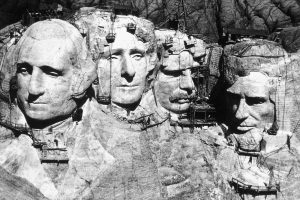
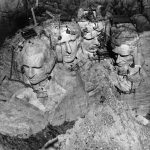 appeared in works of fiction, as well as being discussed or depicted in other popular works. It has also been featured a number of movies. It attracts over two million visitors annually. It’s amazing to me that what started out to be a tourist attraction, quickly became a must see place for every patriotic American. My husband and I love to go to the Black Hills, and with the close proximity to our Casper, Wyoming home, we take a week every summer to go and enjoy the beauty and patriotism that now resides there.
appeared in works of fiction, as well as being discussed or depicted in other popular works. It has also been featured a number of movies. It attracts over two million visitors annually. It’s amazing to me that what started out to be a tourist attraction, quickly became a must see place for every patriotic American. My husband and I love to go to the Black Hills, and with the close proximity to our Casper, Wyoming home, we take a week every summer to go and enjoy the beauty and patriotism that now resides there.
 The discovery of gold in the United States triggered massive growth, with towns springing up across the area. Helena, Montana was one of those towns. On October 30, 1864, four miners struck it rich at their appropriately named mine, “Last Chance Gulch.” From that discovery came one of the wealthiest cities in the United States by the late nineteenth century…Helena, Montana. While it was once one of the wealthiest cities, the current population of Helena doesn’t really fall in line with the direction the city appeared to be taking in 1864. As of the 2010 census the population is 28,190, making it the fifth least populous state capital in the U.S after Montpelier, Vermont; Pierre, South Dakota; Augusta, Maine; and Frankfort, Kentucky.
The discovery of gold in the United States triggered massive growth, with towns springing up across the area. Helena, Montana was one of those towns. On October 30, 1864, four miners struck it rich at their appropriately named mine, “Last Chance Gulch.” From that discovery came one of the wealthiest cities in the United States by the late nineteenth century…Helena, Montana. While it was once one of the wealthiest cities, the current population of Helena doesn’t really fall in line with the direction the city appeared to be taking in 1864. As of the 2010 census the population is 28,190, making it the fifth least populous state capital in the U.S after Montpelier, Vermont; Pierre, South Dakota; Augusta, Maine; and Frankfort, Kentucky.
My husband, Bob Schulenberg’s aunt, Marion Kanta, and her family lived in Helena until the time for her passing in 1999, and many of her family members live there still. That said, we visited the capitol city a few times, and found it to be a very nice place. Of course, during the gold rush years, things might have been very 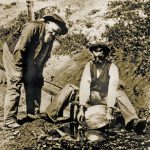 different. A gold rush town can have a tendency to be a high crime area, and when 3.6 billion dollars worth of gold is extracted in the city limits of a town over a twenty year period, you know that there were people who would like nothing more than to take over the claim of another person, no matter what it took. The first major Anglo settlement of Montana began in the summer of 1862, when prospectors found a sizeable deposit of placer gold at Grasshopper Creek to the west of what is today…Helena, Montana. When other even richer deposits were discovered nearby, a major rush began as tens of thousands of miners scoured the territory in search of gold. In 1864, four prospectors spotted signs of gold in the Helena area while on their way to the Kootenai country, but they were eager to reach the reportedly rich gold regions farther to the north and did not stop. Then, after striking out on the Kootenai, they decided to take “one last chance” on finding gold and returned. When the signs turned out to mark a rich deposit of placer gold, they staked their claims and named the new mining district Last Chance Gulch.
different. A gold rush town can have a tendency to be a high crime area, and when 3.6 billion dollars worth of gold is extracted in the city limits of a town over a twenty year period, you know that there were people who would like nothing more than to take over the claim of another person, no matter what it took. The first major Anglo settlement of Montana began in the summer of 1862, when prospectors found a sizeable deposit of placer gold at Grasshopper Creek to the west of what is today…Helena, Montana. When other even richer deposits were discovered nearby, a major rush began as tens of thousands of miners scoured the territory in search of gold. In 1864, four prospectors spotted signs of gold in the Helena area while on their way to the Kootenai country, but they were eager to reach the reportedly rich gold regions farther to the north and did not stop. Then, after striking out on the Kootenai, they decided to take “one last chance” on finding gold and returned. When the signs turned out to mark a rich deposit of placer gold, they staked their claims and named the new mining district Last Chance Gulch.
Last Chance Gulch would prove to be the second biggest placer gold deposit in Montana, producing some 19 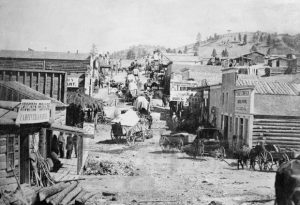 million dollars worth of gold in just four years. Almost overnight, thousands of miners flooded into the region, and the four original miners added to their fortunes by establishing the town of Helena to provide the new miners with food, lodging, and supplies. But unlike many of the early Montana mining towns, Helena did not disappear once the gold gave out, which was inevitable. Helena was able to survive and grow by serving the wider Montana mining industry, because it was located on several major transportation routes, well supplied with agricultural products from an adjacent valley, and near to several other important mining towns. In 1875, the city became the capital of Montana Territory, and in 1894, the capital of the new state of Montana.
million dollars worth of gold in just four years. Almost overnight, thousands of miners flooded into the region, and the four original miners added to their fortunes by establishing the town of Helena to provide the new miners with food, lodging, and supplies. But unlike many of the early Montana mining towns, Helena did not disappear once the gold gave out, which was inevitable. Helena was able to survive and grow by serving the wider Montana mining industry, because it was located on several major transportation routes, well supplied with agricultural products from an adjacent valley, and near to several other important mining towns. In 1875, the city became the capital of Montana Territory, and in 1894, the capital of the new state of Montana.

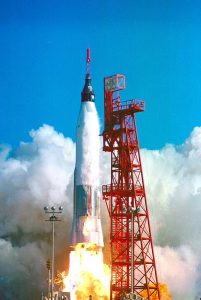 I’m sure that many of you remember the movie, Deep Impact, which was about a group of astronauts trying to save the world by deflecting a meteor, so it wouldn’t hit the earth. Robert Duvall played the part of Captain Spurgeon “Fish” Tanner, a retired, and largely considered by the rest of the crew, an “over the hill” astronaut. Nevertheless, in the end, they were glad they had him when it came to completing their mission, even though it did cost them their lives. Of course, the movie was fictional, and not realistic in many aspects, but the part that struck me as cool, was that the retired astronaut got a second chance to be useful in an important mission.
I’m sure that many of you remember the movie, Deep Impact, which was about a group of astronauts trying to save the world by deflecting a meteor, so it wouldn’t hit the earth. Robert Duvall played the part of Captain Spurgeon “Fish” Tanner, a retired, and largely considered by the rest of the crew, an “over the hill” astronaut. Nevertheless, in the end, they were glad they had him when it came to completing their mission, even though it did cost them their lives. Of course, the movie was fictional, and not realistic in many aspects, but the part that struck me as cool, was that the retired astronaut got a second chance to be useful in an important mission.
However, Captain Spurgeon Tanner wasn’t the only retired astronaut to get a second chance to go into space. On October 29, 1998, nearly four decades after he became the first American to orbit the Earth, Senator John Hershel Glenn Jr was launched into space again as a payload specialist aboard the space shuttle Discovery. At 77 years of age, Glenn was the oldest human ever to travel in space. During the nine day mission, he served as part of a NASA study on health problems associated with aging. Like our fictional Captain Spurgeon Tanner, Senator John Glenn was useful in space again. He had something that the other astronauts didn’t have…age. I don’t suppose that the studies done on John Glenn were the saving the world type, but they were real life studies, and that’s important too.
John Glenn became famous when he was chosen by NASA in 1959, along with six other men, to be the first American astronauts. He was a lieutenant colonel in the US Marine Corps. A decorated pilot, he flew nearly 150 combat missions during World War II and the Korean War. In 1957, he made the first nonstop supersonic flight across the United States, flying from Los Angeles to New York in three hours and 23 minutes. Then, in April 1961, the American space program suffered a setback of sorts, when Soviet cosmonaut Yuri Gagarin became the first man in space, and his spacecraft, Vostok 1, made a full orbit before returning to Earth. It was a feat that the United States had hoped to achieve first. The United States kicked things into high gear, and less than one month later, American Alan Shepard Jr became the first American in space when his Freedom 7 spacecraft was launched on a suborbital flight. American “Gus” Grissom made another suborbital flight in July. Then, in August, Soviet cosmonaut Gherman Titov spent more than 25 hours in space aboard Vostok 2, making 17 orbits. As a technological power, the United States looked second-rate, compared with its Cold War adversary.
If the Americans wanted to dispel this notion, they needed a multi-orbital flight before another Soviet space advance arrived. On February 20, 1962, NASA and Colonel John Glenn accomplished this feat with the flight of Friendship 7, a spacecraft that made three orbits of the Earth in five hours. Glenn was hailed as a national hero, and on February 23 President John F. Kennedy visited him at Cape Canaveral. Glenn later addressed Congress and was given a ticker-tape parade in New York City. It was at this point that NASA made the unfortunate decision not to risk the life of the now famous Glenn by sending him into space again. NASA essentially grounded the “Clean Marine” in the years after his historic flight. Frustrated with this uncharacteristic lack of activity, Glenn turned to politics, In 1964, he announced his candidacy for the US Senate from his home state of Ohio and formally left NASA. Later that year, however, he withdrew his Senate bid after seriously injuring his inner ear in a fall from a horse. In 1970, following a stint as a Royal Crown Cola executive, he ran for the Senate again but lost the Democratic nomination to Howard Metzenbaum. Four years later, he defeated Metzenbaum, won the general election, and went on to win re-election three times. In 1984, he unsuccessfully sought the Democratic nomination for president.
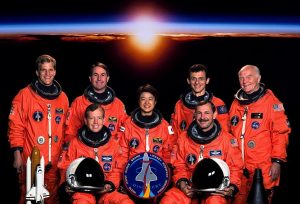
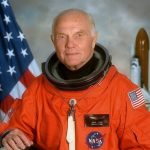
His really big claim to fame would once again come from NASA, which seemed to be his destiny after all. In 1998, Glenn attracted considerable media attention when he returned to space aboard the space shuttle Discovery. In 1999, he retired from his US Senate seat after four consecutive terms in office, a record for the state of Ohio. While his years in politics were much longer, he will always be remembered for the two historic flights he made into space.

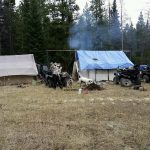 When you are a part of an outdoorsy family, things like hiking, horseback riding, camping, and hunting are second nature. The funny thing is that growing up, my niece, Susan Griffith really didn’t seem that type to me. In fact, Susan grew up being a city girl, not a country girl. All that changed when she and her husband, Josh moved to the country, outside of Powell, Wyoming. Since then, Susan has thrived on every aspect of the country life. Together they ride horses, go camping as much as they possibly can, go fishing, and hiking. Susan has told me that if they could, she and Josh would live in the mountains, but of course, that wouldn’t really work well for their girls, because kids need to be in school, with their friends, and their activities. So, I guess that living in the mountains will have to come after their girls are grown up and living on their own.
When you are a part of an outdoorsy family, things like hiking, horseback riding, camping, and hunting are second nature. The funny thing is that growing up, my niece, Susan Griffith really didn’t seem that type to me. In fact, Susan grew up being a city girl, not a country girl. All that changed when she and her husband, Josh moved to the country, outside of Powell, Wyoming. Since then, Susan has thrived on every aspect of the country life. Together they ride horses, go camping as much as they possibly can, go fishing, and hiking. Susan has told me that if they could, she and Josh would live in the mountains, but of course, that wouldn’t really work well for their girls, because kids need to be in school, with their friends, and their activities. So, I guess that living in the mountains will have to come after their girls are grown up and living on their own.
Susan and Josh are great parents. They are raising their girls to be strong, capable young ladies. Of course, they encourage the girly things, but they have also shown them the other side of things. They go hunting, and have taught their older daughter, Jala to hunt too. Kaytlyn’s turn will come when she gets a bit older. Going hunting has helped to fill their freezer with meat, and saves money on the food budget. So far this year, both Josh and Jala have shot their elk, but Susan has yet to get hers. With that in mind, this weekend is going to be a birthday hunting weekend, and I hope Susan has a successful hunt.
Susan has felt like she is living a dream life ever since she and Josh met. She and Josh are so happy with the life they have built together. Josh has helped Susan expand her horizons so much. Some of the things she was 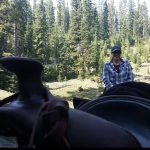
 skeptical about, like 4 wheelers, are no longer an issue for her. She is confident and capable, and she loves horseback riding, which they started to help her get over her fear of 4 wheeling. I guess it was just something about being out there with no car around you for protection, which makes sense to me, since I’m not a motorcycle/4 wheeler fan myself. Susan has, in many ways, become a completely different person since she met Josh. She is feeling blessed, and loving every minute of it. Today is Susan’s birthday. Happy birthday Susan! Have a great day and a great hunt!! We love you!!
skeptical about, like 4 wheelers, are no longer an issue for her. She is confident and capable, and she loves horseback riding, which they started to help her get over her fear of 4 wheeling. I guess it was just something about being out there with no car around you for protection, which makes sense to me, since I’m not a motorcycle/4 wheeler fan myself. Susan has, in many ways, become a completely different person since she met Josh. She is feeling blessed, and loving every minute of it. Today is Susan’s birthday. Happy birthday Susan! Have a great day and a great hunt!! We love you!!
 My niece, Dustie Masterson is my sister, Cheryl Masterson’s only daughter-in-law, but she really seems more like Cheryl’s daughter to all of us. She fits in the family so well, that it’s like she has always been a part of it. She and her sisters-in-law, Chantel Balcerzak, Toni Chase, Liz Masterson, and Jenny Spethman, seem to have a great comradery, and whenever I see them, they are always laughing and joking around. For our family, Dustie was my nephew, Rob Masterson’s match made in Heaven, and of course, he feels that way too. Theirs is a close, loving relationship, with a heaping portion of joking, teasing, and much laughter.
My niece, Dustie Masterson is my sister, Cheryl Masterson’s only daughter-in-law, but she really seems more like Cheryl’s daughter to all of us. She fits in the family so well, that it’s like she has always been a part of it. She and her sisters-in-law, Chantel Balcerzak, Toni Chase, Liz Masterson, and Jenny Spethman, seem to have a great comradery, and whenever I see them, they are always laughing and joking around. For our family, Dustie was my nephew, Rob Masterson’s match made in Heaven, and of course, he feels that way too. Theirs is a close, loving relationship, with a heaping portion of joking, teasing, and much laughter.
Dustie is such a sweet, loving person, and so patient too. She works with her children,  Raelynn, Matt, and Anna to make sure they do well in their studies. With the encouragement of their parents, they are all good students, who like school. Dustie is also very good with her nieces and nephews. She and my grand niece, Aleesia Spethman have a very special relationship. They are good friends, but Aleesia knows that Dustie is likely to tease her too. They have spent quite a bit of time around each other, so even at 5 years old, Aleesia pretty much has Dustie figured out.
Raelynn, Matt, and Anna to make sure they do well in their studies. With the encouragement of their parents, they are all good students, who like school. Dustie is also very good with her nieces and nephews. She and my grand niece, Aleesia Spethman have a very special relationship. They are good friends, but Aleesia knows that Dustie is likely to tease her too. They have spent quite a bit of time around each other, so even at 5 years old, Aleesia pretty much has Dustie figured out.
Dustie recently changed jobs, and now instead of working at Albertsons in the fresh cut produce department, she is at Sam’s Club, and she couldn’t be happier. Her work includes cashier and she has her own department to take care of too. Plus, she has the added benefit of having her husband, Rob working at the same store, but in a different department. Nevertheless, they can drive to work together…occasionally. With the hours at Sam’s Club, they don’t always work the same shifts.
I think that one of the best aspects of Dustie is her curiosity…the drive to know more. Dustie loves  documentaries, a love we share. She thrives on history, and I do too. I suppose it is the “mouse in the corner” aspect of it, in that we would both love to be that inconspicuous observer sitting in the corner watching as the events unfold. To be able to watch great historic events as they happened…in real time, would be of great interest to both of us. Dustie also likes to watch documentaries about how things work. The intricate functions of amazing inventions, as well as things like the weather and how it affects things around it. It truly is quite simply curiosity, and it is an aspect of Dustie’s personality that she has honed to perfection. Today is Dustie’s birthday. Happy birthday Dustie!! Have a great day!! We love you!!
documentaries, a love we share. She thrives on history, and I do too. I suppose it is the “mouse in the corner” aspect of it, in that we would both love to be that inconspicuous observer sitting in the corner watching as the events unfold. To be able to watch great historic events as they happened…in real time, would be of great interest to both of us. Dustie also likes to watch documentaries about how things work. The intricate functions of amazing inventions, as well as things like the weather and how it affects things around it. It truly is quite simply curiosity, and it is an aspect of Dustie’s personality that she has honed to perfection. Today is Dustie’s birthday. Happy birthday Dustie!! Have a great day!! We love you!!

